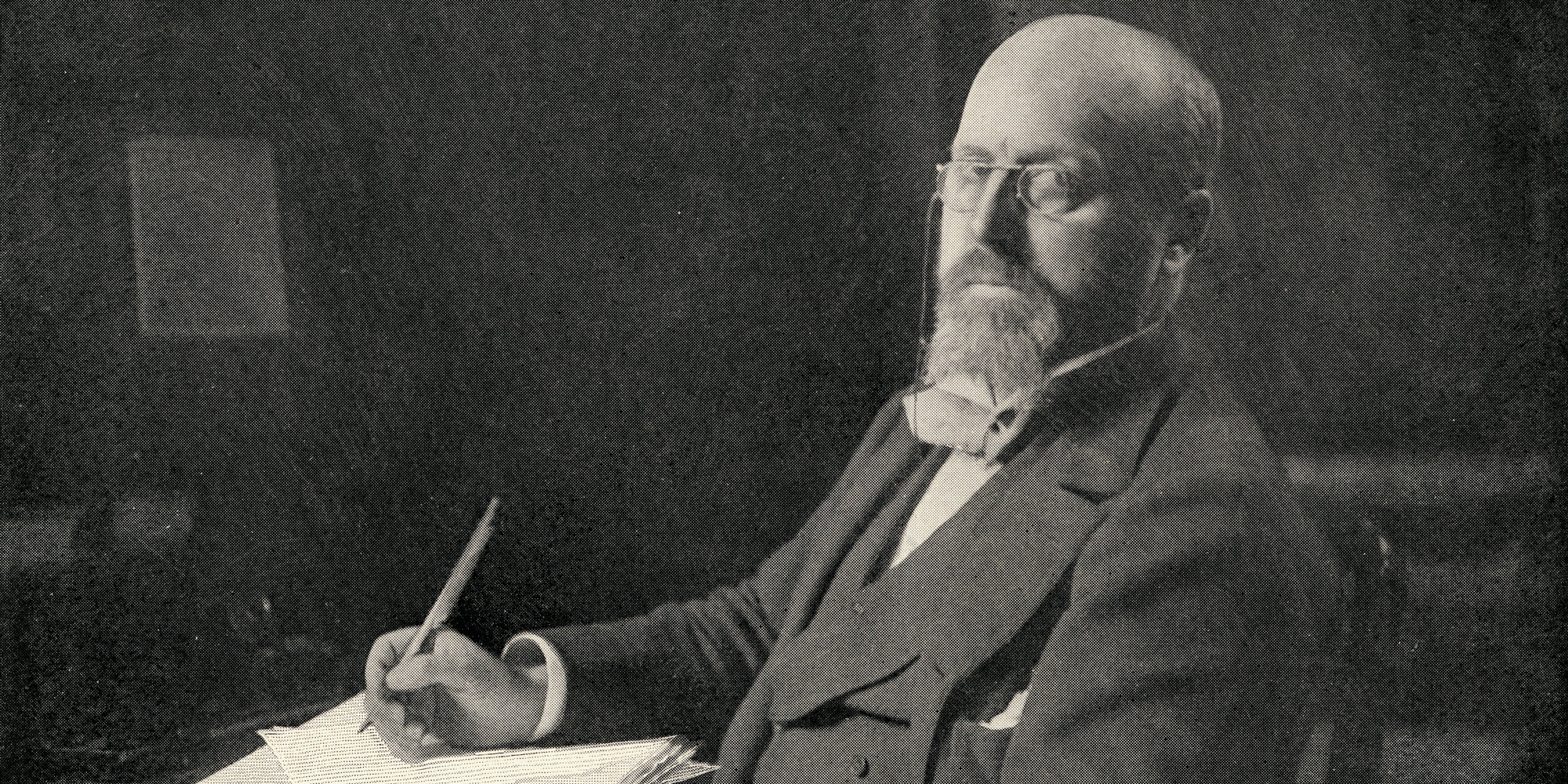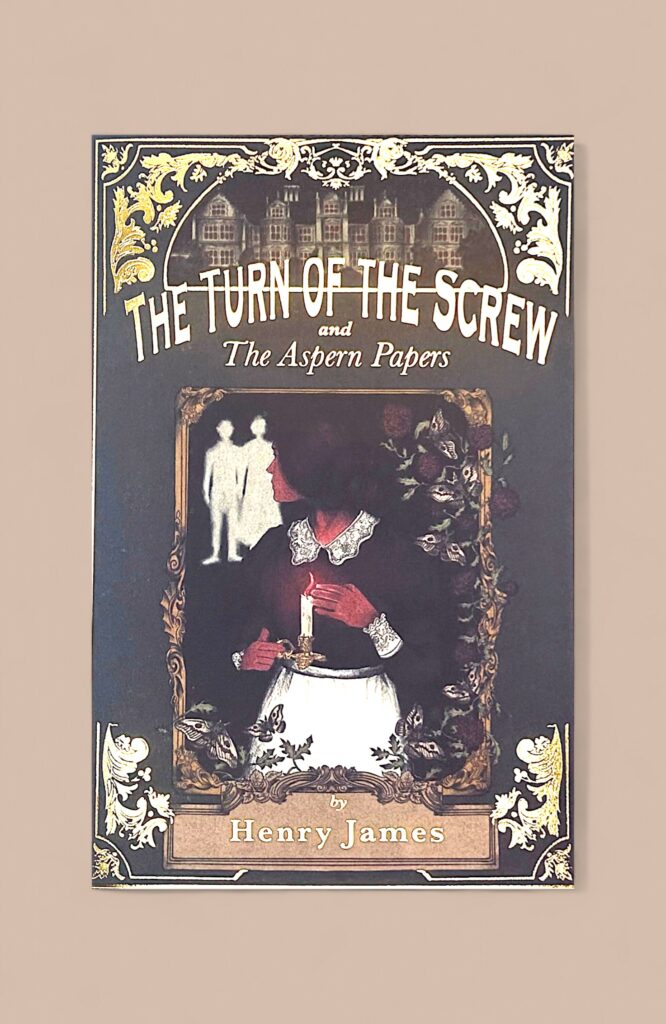
The Aspern Papers
Denise Hanrahan Wells looks at one of Henry James’ best-known works.
What does a Henry James novella and Percy Bysshe Shelley have in common? Well, an anecdote related to the latter inspired the former. Whilst staying with friends in Florence during 1887, Henry James recorded in his Notebooks a story he had heard concerning Claire Clairmont, the stepsister of Mary Shelley, onetime lover of Byron and mother of their daughter Allegra, and probable lover of Percy Shelley. A now elderly Miss Clairmont had, until recently, been living in Florence with her niece, an unmarried woman of around fifty. Enter Boston art critic and Shelley superfan Edward Silsbee. As James revealed in his Notebooks:
Silsbee knew that they had interesting papers – letters of Shelley’s and Byron’s – he had known it for a long time and cherished the idea of getting hold of them. To this end he laid the plan of going to lodge with the Misses Clairmont – hoping that the old lady, in view of her great age and failing condition would die while he was there, so that he might then put his hand on the documents which she hugged close in life.[i]
This did indeed happen and the elder Miss Clairmont died in 1879. Silsbee approached the younger Miss Clairmont regarding his desire to have the letters. Her response was ‘I will give you all the letters if you marry me!’ Silsbee did not comply and beat a hasty retreat.
This little anecdote clearly produced a spark of inspiration in the mind of Henry James which quickly grew into his novella The Aspern Papers. This was serialized just a year later in The Atlantic Monthly in 1888. For the sake delicacy he made a number of changes. Edward Silsbee became the unnamed narrator of the story. Shelley became the American poet Jeffrey Aspern, described by the narrator as his ‘god’ in Chapter One. The English Clairmonts became the American Juliana Bordereau and her great niece Tina (originally named Tita in the serialized version) living a reclusive life in a crumbling old palazzo in Venice. In the Henry James tale, the ancient Juliana in her much younger years had been the lover of Jeffrey Aspern and holds a number of his love letters in her possession which she refuses to show anyone. Our narrator through duplicitous means manages to persuade the reclusive Juliana to rent him some rooms in her home in exchange for an exorbitant rent. His only desire is to get his hands on those letters. And thus begins our tale.
The reader is immediately immersed into the world and thoughts of the unnamed narrator. It is appropriate that this novella is included in the same volume as The Turn of the Screw (1898) as the themes of the dangers of obsession and isolation were further developed in his later novella. Of the two texts, The Turn of the Screw is the most chilling and gothic of the two, nevertheless, there remains much power in The Aspern Papers. This is achieved through James’s detailed development of psychological intensity from the brief anecdote which inspired his tale. The decision to move the location to Venice carries certain connotations and texts which make use of this location are too numerous to mention, although for a chilling tale one such example is Wilkie Collins, The Haunted Hotel (1878).
Initially it appears as though the narrator has a carefully constructed strategy to gain possession of the precious papers. The narrator intends to infiltrate the home of the extremely reclusive Aunt and niece, gain their confidence in order to gain access to the papers and, in his mind, further the world’s knowledge of the great poet Jeffrey Aspern.
An early impression of the narrator’s determination is created when he reveals he has already viewed the exterior of the dwelling on a number of occasions before seeking to make entry and something of his nature can be gathered from his descriptions of his early impressions: ‘It was not particularly old, only two or three centuries; and it had an air not so much of decay as of quiet discouragement’ and it ‘overlooked a clean, melancholy, rather lonely canal.’ (Chapter One) Whilst this is unsettling, his later observation that the elder Miss Bordereau is one hundred and fifty years old could be an indication of our old friend, the unreliable narrator. Not only is he unreliable, he is not honourable. This is one of the intriguing aspects of this tale as the narrator attempts to draw the reader into sharing his desire to possess those papers. He adopts a false name lest his own name as a Jeffrey Aspern scholar should arouse suspicion, and succeeds in gaining entry by charming the younger Miss Tina. He claims he needs somewhere quiet to work with a garden and to have ‘fallen in love at sight with the whole place’ (Chapter Three). Even at this early stage, it is possible to recognize the irony when he offers his ‘word of honour’ as to his respectability and inoffensive nature as we are aware of his true intentions.
This is not a simple tale of deception though as his first encounter with Miss Juliana is a little unsettling. She immediately commands him to sit on a chair some distance from her and informs him ‘I hear very well,’ and manages to imply he had been shouting as he begins to put forward his case. He reflects on how unsettling her appearance is. She wears a veil which covers her eyes, nevertheless he reveals ‘… I felt her look at me with great penetration, though I could only see the lower part of her bleached and shrivelled face.’ She will clearly be a match for his machinations as her wits are sharp when it comes to money. He offers to pay rent in advance of whatever sum she wants which earns the response ‘Well, then, a thousand francs a month,’ she said instantly, while her baffling green shade continued to cover her attitude. She later pretends uncertainty as to whether he had agreed to francs or dollars!
Henry James appeared to have been pleased with The Aspern Papers as he included it in his New York Edition. This was a twenty-four volume collection of selected items of his works, many of which he reworked before publication, with some of his novels such as The Bostonians (1886) being omitted.
There have been a number of adaptations of The Aspern Papers, one as recently as 2018 directed by Julien Landais, starring Vanessa Redgrave and Joely Richardson. BBC Radio 4 also broadcast an audio adaptation as their Book at Bedtime in 2010 and whilst the reading by Samuel West is enjoyable, it is heavily abridged with much taming of the Jamesian sentence. To appreciate the full intensity of the greed and power of Juliana and the narrator’s obsessive pursuit I urge you to read the novella. It is no coincidence that the narrator’s friend Mrs Prest refers to his research activities as ‘a fine case of monomania’ within the first few pages of the text. He freely admits to the reader ‘Hypocrisy, duplicity are my only chance. I’m sorry for it, but there’s no baseness I wouldn’t commit for Jeffrey Aspern’s sake.’ (Chapter One) To find out just was lengths he will go to, I suggest you now turn to The Aspern Papers.
[i] Henry James, Notebooks 33, 12 January 1887
For more information on the life and works of Henry James, visit: The Center for Henry James Studies
Our edition of The Turn of the Screw / The Aspern Papers can be found here: Turn of the Screw & The Aspern Papers – Wordsworth Editions
Image above: Credit Classic Image / Alamy Stock Photo
Books associated with this article
